
Working the Room
Jeff Lang’s latest album was mixed in surround, but not in the way you might think.
Dave Manton was getting plenty of weird looks as he rifled through the ABC studios’ storerooms in Southbank, Melbourne, rooting out a growing pile of Genelec monitors. It was one thing to be hoarding that many, but another to bypass the control room and start lining them up in the live room instead. It wasn’t stocktake time, and the ABC engineer was looking suspicious.
But Manton had more to worry about than incredulous looks. He’d just signed up to the oddest mix adventure he’d ever been on, and he still had to find his way through a routing nightmare.
Manton’s odd behaviour was at the behest of Jeff Lang. Lang, an avid singer/songwriter and one of Australia’s best guitarists, has been nominated seven times for Best Blues & Roots Album at the ARIAs, and won twice; once in 2002 for a collaboration with Bob Brozman, Rolling Through This World, and again with his last album Carried In Mind in 2012. He also won an ARIA for Best World Music Album with Mamadou Diabate and Bobby Singh for Djan Djan.
For his 15th album, I Live In My Head A Lot These Days, Lang decided to try his hand at mixing in a way he wasn’t sure had ever been done before. The idea came to him when he ran out of interesting movies on one of many long haul flights. Lang: “I was listening to a playlist my manager Jordan had put together, and a track by Charles Mingus came on. It noticeably had more depth of field: The drummer was over here, the piano player on the other side of the studio, but slightly closer — you got a real picture of the players in the room. Then the next song started and it felt like the instruments were cling wrapped across my face by comparison.”
What Lang envisioned was a small group standing around a Blumlein pair, allowing their natural spacing and timing to create the record’s depth. He was immediately hooked on the idea. But Lang’s material can often feature electric guitar and robust drumming alongside vocals — it’s not in string quartet or four-part harmony territory when it comes to acoustically balancing levels in a room. And the more he thought about recording live vocals in a stereo field, the more problems he conjured up. For example, Lang said: “If I’m playing an acoustic slide guitar and turn my head to look down at my instrument, my voice isn’t in the centre of the picture anymore.”
Lang played out scenario after scenario, and technically, it never seemed to stack up. Live recording his band material with a stereo pair was just never going to work.
GETTING INTO POSITION
But he couldn’t let the idea rest, so he moved on to a second line of thinking that went, “maybe I can record the session as I normally would but as opposed to welcoming the room into the sound I can record everything fairly isolated,” said Lang. “Then reconstitute the band by positioning speakers around a stereo microphone. That way we’ve got the take we like and can keep moving the speakers around until the balance is right. It did occur to me though that if it was a good idea, how come I don’t know of anyone else doing it?!”
There wasn’t much of a precedent for this kind of mix, but Lang wasn’t entirely flying in the dark. A previous session was his ray of hope the plan would come off. Lang: “I made an album for Alison Ferrier where there were a couple of looped atmospheric parts. It didn’t matter what I did with them, even though they were required parts of the arrangement they just felt sticky-taped on.
“So I piped them back through a couple of little guitar amps and put a stereo Blumlein mic in front of them at a distance. They were still left and right, but the fact they were in the one space, the same space everything else was recorded in, meant they fitted into the track really easily. So that was a little bit of a precedent. It could work!”
Doubts aside, Lang pressed on with the help of long-time engineer Colin Wynne from Thirty Mill Studios. Lang has his own studio in a four-car garage-sized shed where he recorded his last album. Although Lang was planning to reconstitute the session from its pieces, there was still no doubt his band would be tracking the bed tracks together live, so he built a vocal booth and isolation boxes for guitar and bass amps to cut down on spill.
His setup is based around a Toft console and Tascam ATR60 1/2-inch, 8-track tape machine he bought from Joe Camilleri’s studio. While he does dump tracks into ProTools for sundry overdubs, much of the core band is done in eight tracks. “It’s fun constricting yourself to eight tracks,” said Lang. “By and large it’s good. You make all these decisions going in and it makes mixing so much easier.” Which in this case, was pure gold when it came to the end game.
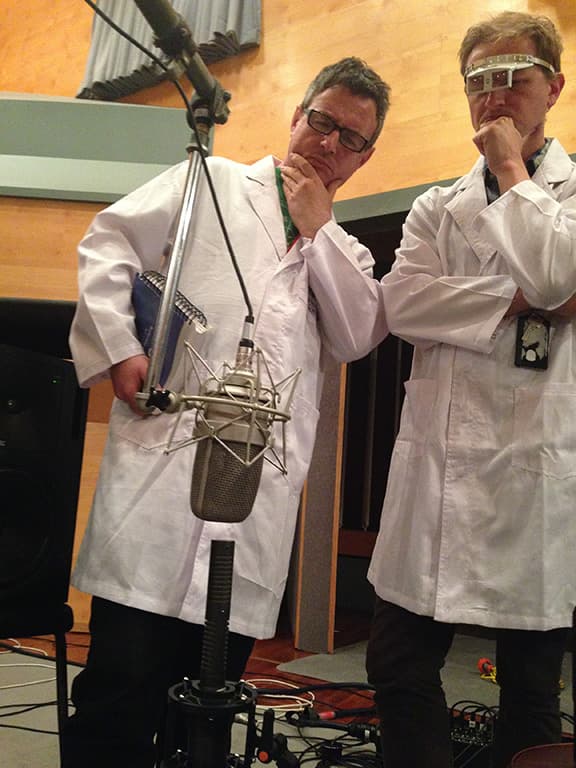

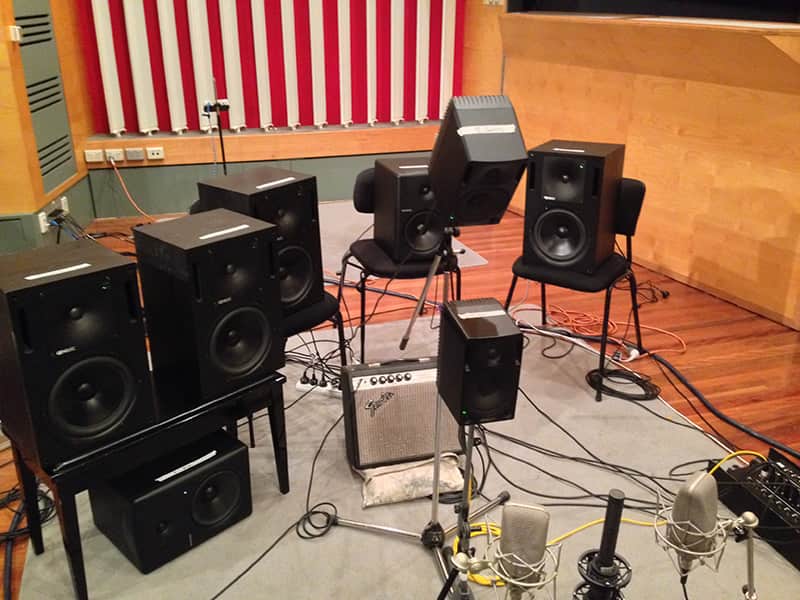
PIECING THE PUZZLE
For drums, Lang often opts for a Glyn Johns arrangement to let the drummer manage their own balance. He uses a couple of Beesneez James tube condensers for the top and side positions, with a Beyer M201 on snare and Colin’s EV RE20 for kick. Lang used a Beyer M380 figure-eight dynamic for bass. He likes the “bird-cage looking thing, because it’s figure-eight so it’s got proximity effect up the ding-dong. It gets thicker and thicker the closer you get it to the cab.”
For vocals Lang tends to opt for a Shure SM7. He also has a couple of Sony condensers he digs, he considers his C48 the closest thing to a swiss-army knife he’s found: “The treble is really sweet and it’s got extended high end. It’s a really neutral, all-purpose mic, but it’s got a little more character to it.” His Sony C37P FET condenser is his acoustic guitar go-to mic, with a bit more detail than other condensers and a darker tonality closer to a ribbon. He says it’s killer on his main instrument. Lang is also a fan of ribbons and can’t get enough of his Bang & Olufsen BM5 ribbon he had repaired with NOS RCA ribbon and upgraded with active circuitry by Steve Sank in Tucson. “The mics can be really quiet so you get a fair bit of hiss getting the gain up,” said Lang. “Having it converted into an active mic makes it way more usable.”
Lang prefers to work in his own space, but while he does engineer other musician’s albums, Lang finds it crucial to have Colin engineering when working on his own records. “I don’t enjoy having the two hats on,” said Lang. “I don’t want to be doing a lead vocal take with the band and worrying about whether I’m hitting the preamp too hard.”
Maybe I can record the session as I normally would… Then reconstitute the band by positioning speakers around a stereo microphone
LIVING OUT OF HIS HEAD
Once everything had been recorded, the mix for I Live In My Head A Lot These Days turned into one big re-amping session at the ABC Studio. Lang used the studio for a couple of reasons: firstly, the ABC was releasing the album, so he was able to test his concept on borrowed time; and secondly, it was one of the few places with enough spare monitors floating about. It also had movable baffling and curtains in the roof which tightened up the room and helped bring focus to some songs.
Manton was in charge of re-routing the SSL C200 console and ProTools system to send multiple lines back into the recording space, which was an unusual request. According to Manton, it was “a routing nightmare. We basically had to run the studio in reverse, everything usually heads toward the control room, not the other way around. I don’t think anyone ever considered the prospect of running that many lines back into the studio.”
At the ends of the cable returns were a collection of the ABC’s Genelec monitors, which catered for the instrument sends and a smaller monitor from Lang’s collection served as the centre vocal channel. At the centre of the speaker cluster a Royer SF24 stereo ribbon mic provided the main stereo image capture. And after a bit of experimentation with spaced pairs and other mic setups, it was decided a Neumann M150 omni tube mic would help solidify the mono centre and provide a little more extension at the low and high ends.
“Having a few different speakers — like the vocal coming from its own small speaker and quite close, and the delay coming through a guitar amp that was distorted — helped separate it in the room,” said Manton. “But having most things running through the same kind of speaker gives you a level playing field if you have to rearrange instruments into different speakers. That way you’re only dealing with the change in relationship with the microphone and room.”



THE VISION
The record was mixed by EQ’ing and compressing a little at the board and pumping the tracks out speakers arranged around the two mics. Balances were crafted with a combination of adjusting levels on the console and physically moving speakers around the space. It all came back through the mics, with about 70% of the sound coming from the ribbon and the rest comprising the omni centre feed, all barely tickling an Al Smart C2 compressor on the stereo bus.
While Wynne was mostly at the board, and Manton was keeping the ship patched, Lang was still dictating the vision of the reconstituted band from the sounds he was hearing in his head.
Lang: “Greg Sheehan played percussion and Danny McKenna was on drums. There were some songs where Greg was playing a toy tambourine. He has a particular technique with an SM58 right up close to the skin. It sounds like a cross between a drum kit and a tabla, with this wide range of tone right through to the low end.
“I pictured it working with the kit on one side of the stereo field and the tambourine on the other. The drum kit would have three speakers; one for kick drum, plus left and right, to give it the physical size a kit would take up.
“There was a small near-field monitor speaker for the lead vocal. We found a spot early on far enough away to not get too much roominess, and right in the centre of the spectrum. That speaker didn’t move.
“Acoustic guitar, or anything else I wanted fairly upfront and central was fairly close and aimed down 45 degrees.
“The bass was on the other side of the Blumlein pair. Because you’ve got a centre spot that’s at zero degrees and the other one at 180.
“Seeing as we were reconstituting sounds anyway, rather than unhook my Roland 555 tape echo for slap back, I brought a small guitar amp and used a digital echo. We could get the time spot on and colour it as dark or as bright as we wanted. Being an open-back amplifier, when I wanted the echo to be slightly more diffuse I’d set the amplifier far away from the microphone and fire it sideways so it was coming out the front and back but not directly at the mics.
“There were a couple of songs where we used the ABC’s EMT plate reverb, with the returns back out to a pair of speakers in the room as well.
“The closest speakers were a foot and a half away, with the rest generally spread about three or four feet away. On some songs, speakers were placed right out in the corners of the room to energise the space. Sometimes instead of turning up a guitar solo, I might just bring it up in the room so it gets bigger, not necessarily louder.”
There were no subs in the room, but Lang did opt to use ported monitors for bass and kick drum.
MIXING INTO THE MIC
At first, the team tried pre-balancing the tracks before sending them out into the room. But after a couple of songs they abandoned that method and just started each song flat and monitored through the mics. “If you’re going to be mixing it through those speakers, it may as well be the place you start,” said Manton.
Lang: “For each song, we’d get the vocal to where we were getting enough level without overdriving the speaker and bring everything up to its relative level. If we started the other way round, with the instruments, invariably we were setting everything else too loud. Because it can kind of fool you. A lot of the time it wasn’t that loud in the room and it could sound quite raging.
“While I’d be moving speakers around, Colin would be doing most of the compressing and EQ, and one of us would be scoping it out on a pair of headphones to see how it was imaging in a really dry, upfront way.”
For Manton, mixing ‘through’ a mic was akin to mixing to a completely new medium. The way the ribbon mic reacted wasn’t exactly like tape, or bus compression, but it definitely had its own response characteristic unlike anything he’d heard before: “The transient, percussive instruments really benefited.”
Level differences were noticeable, said Manton, but the biggest changes to the mix were when sounds were moved to different speakers. “It was about everything finding its own place within the mix.”
Overall, Manton thought the experience was hard to evaluate against a normal mix. “The process was so different,” he commented. “That you can’t help but react differently to it.” Lang is wary of over-egging the process too. It did achieve the sense of space he was after, and he’ll definitely do it again. Though next time he might try a big wooden hall, and maybe different microphones that would suit specific pieces. It’s a great example of persistence with an unheralded technique that may seem like too much work when you could just make a record without leaving your computer. Thankfully Lang isn’t living entirely in his head these days.
Thanks to Tony ‘Jack The Bear’ Mantz from Deluxe Mastering for the tipoff.


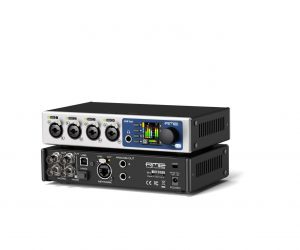


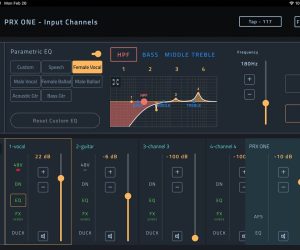




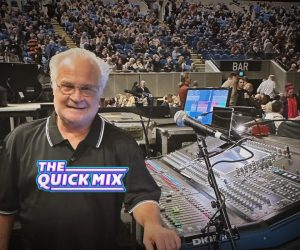

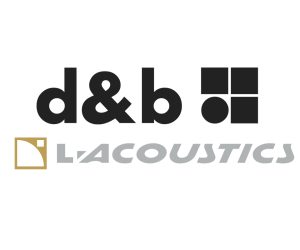



RESPONSES